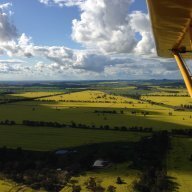OME - I acknowledge this thread is asking about stat's on the most likely phase of flight to encounter a stall, however a stall could occur in any phase should the pilot allow it. Your best defence is to receive thorough training in the recognition of an impending stall and recovery at that stage. I am fortunate enough to instruct both RA-Aus and GA and often have the opportunity to train relatively high time pilots. I make a habit of reviewing their logbook before flying with them and often encounter people who's total stall training consists of a single flight of less than one hour. This is usually reflected in their ability to recover from a stall during the type training I do with them, conversely the pilots who have multiple stalling exercises during their initial training are usually quite competent in stall recovery. If you haven't received the proper instruction then please do yourself a favour and seek it. It would be difficult for pilots to judge whether their slow flight / stall recovery training was to a suitable standard, as a guide I have pasted an extract from the Flight Instructor's Manual below. If you don't t feel your training followed these guidelines, or you feel under confident, please do something about it. Stall awareness and ability to recover should be a skill equal to / better than to any other phase of flight.
09
STALLING AIM
To teach the student the feel and behaviour of the aeroplane at low speeds, the symptoms of the stall and how to recover with the minimum loss of height. INSTRUCTIONAL GUIDE
It should be emphasized that an inadvertent stall should never occur. The student must become proficient at recognizing the approach to the stall and taking immediate action to prevent it occurring. Although the student must be taught some method of entering the stall, it is emphasized that the method of entry is only incidental to the important task of recognizing the warnings of the impeding stall and the recovery from the developed stall. Even if the particular aeroplane normally does not ‘drop a wing’ during the stall the correct stall recovery technique should be taught from the start. The first demonstration of a stall should show the student that it is not in any way a frightening experience and should rid the pupil of any false ideas of danger and violent sensations. The first stall is best done at the end of the lesson preceding that on which stalling is to be dealt with in detail. Whilst no real instruction should be given during this demonstration, it is advisable to indicate the point of stall and the commencement of recovery. Obviously all the points raised cannot be taught during one flight but must be spread over several. Especially in the early stages watch for symptoms of air sickness and discontinue the exercise if necessary.
As you might have gathered, this is a bit of a pet subject of mine!
The CASA Flight Instructors Manual (available as a download from the CASA website) was developed from the RAAF WWII publication AP1732a. This manual was used in training pilots in high drag/low inertia aircraft like the Tiger Moth - so has relevance to RA-Aus types.













